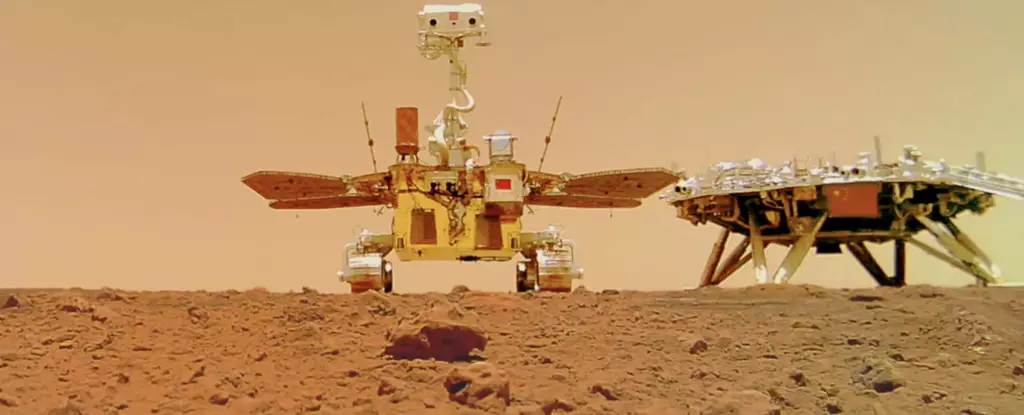Recent discoveries by China’s Zhurong rover have reignited the debate surrounding the existence of ancient oceans on Mars, a topic that has fascinated scientists for decades. A newly published study discusses compelling evidence suggesting that a vast ocean may have once existed on the Martian surface, specifically within the rover’s landing site in the Utopia region of the northern hemisphere. This study reveals intriguing geological formations that support the theory of a once-flourishing aquatic environment, providing a fresh perspective on the enigmatic history of Mars.
The findings from the Zhurong mission highlight features such as pitted cones, polygonal troughs, and etched flows, which collectively suggest a history of water activity on Mars. The lead author of the study, Bo Wu, from The Hong Kong Polytechnic University, posits that these distinctive geological formations could indicate past marine processes, and their existence prompts extensive inquiry into the planet’s hydrologic activity millions of years ago. It is critical to note, however, that the research draws on a bold hypothesis: that an expansive ocean covered more than a third of Mars, potentially as early as 3.7 billion years ago.
While this assertion is grounded in rich data collected from both the Zhurong rover and satellite observations, this theory remains wrapped in mystery. According to the researchers, this primordial ocean likely froze, leading to the etching of distinct coastlines before receding approximately 3.4 billion years ago. This timeline provides a framework for understanding Mars’ climatic transitions and potential habitability over geological epochs.
Despite the promising findings, skepticism looms within the scientific community. Benjamin Cardenas, a scientist with expertise in Martian geology at Pennsylvania State University, questions the interpretations arising from the rover’s data. Cardenas emphasizes the significance of NASA’s long-standing understanding of Mars as an active planet where erosive forces have significantly shaped its current landscape. He raises a critical point regarding the potential impact of Martian winds in disturbing sediments and altering rock formations over billions of years. Wind erosion is an essential factor that may obscure or obliterate evidence of a former shoreline.
The tension between differing opinions reflects the broader challenges entrenched in planetary science. The complexity of sediment movement and surface alteration can hinder efforts to establish definitive conclusions about Mars’ geological history. Bo acknowledges these concerns, recognizing that the impact of meteor collisions could periodically expose subsurface materials, perhaps offering additional insights into the planet’s ancient environments.
The implications of discovering an ancient ocean on Mars extend beyond mere geological curiosity. Such findings could potentially inform our understanding of life’s origins, not only on our planet but across the Solar System. The hypothesis that life on Earth may have arisen in marine environments leads to vital questions. If Mars was indeed once home to large bodies of water, it becomes increasingly relevant to explore whether conditions for life existed there as well.
As scientists piece together the evidence of ancient aquatic environments, the prospect of uncovering signs of life on Mars remains tantalizing. Cardenas’ assertion that understanding Martian conditions is crucial to unraveling the enigma of extraterrestrial life highlights the urgency of future research. Robust missions that return Martian samples to Earth will be critical to offering more concrete evaluations of the planet’s surface and subsurface compositions.
As the Zhurong rover continues to unveil clues about Mars’ watery past, it serves as a reminder of the complexities involved in planetary exploration and the nature of scientific inquiry. Each new discovery adds layers of intrigue while prompting re-evaluations of existing theories. The quest for understanding Mars’ oceanic history remains a poignant pursuit with far-reaching implications, potentially reshaping our comprehension of life’s viability beyond Earth. As we embark on this new era of exploration, the interplay between skepticism and discovery will undoubtedly guide our steps toward enlightening the mysteries of the Red Planet.

